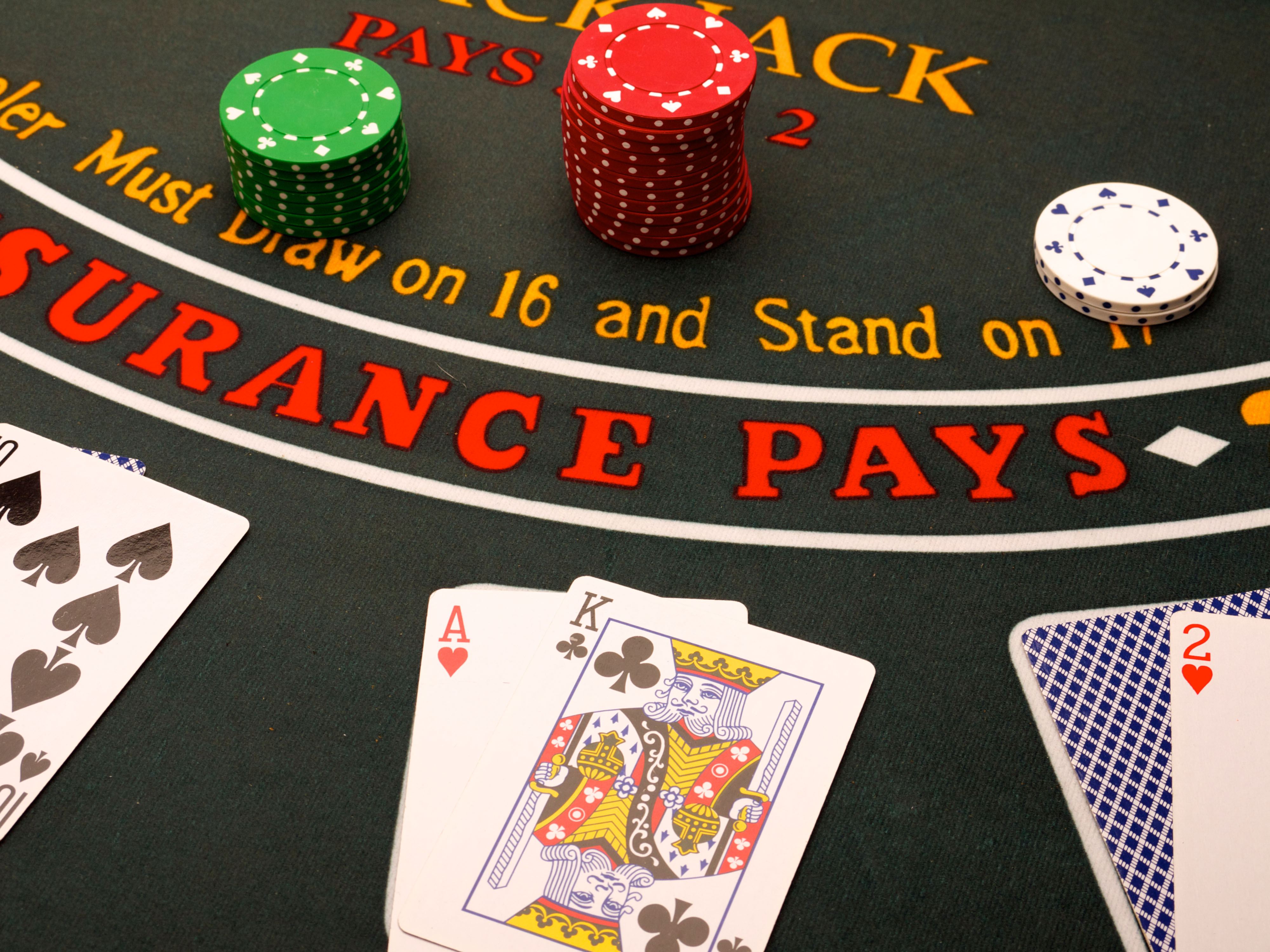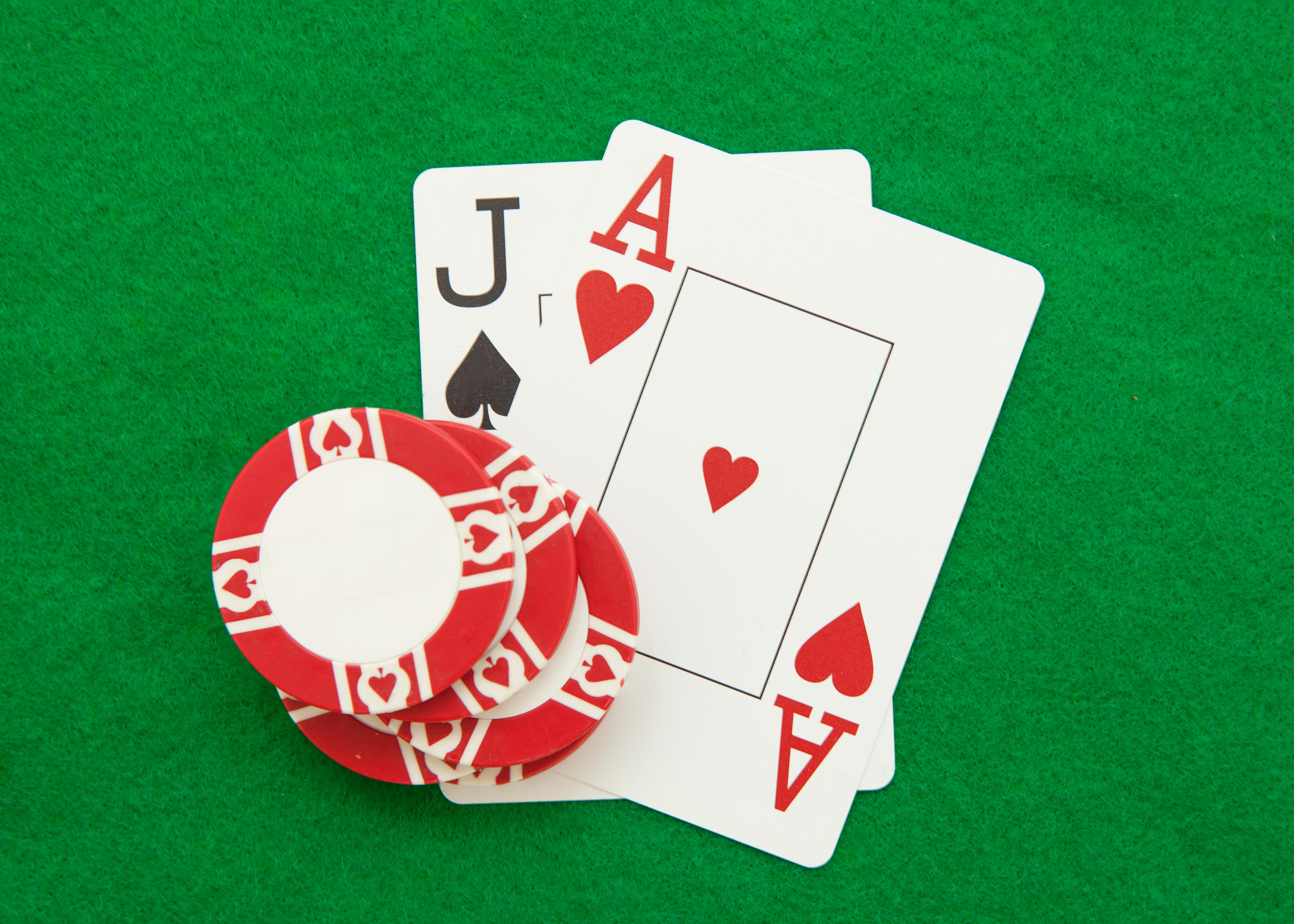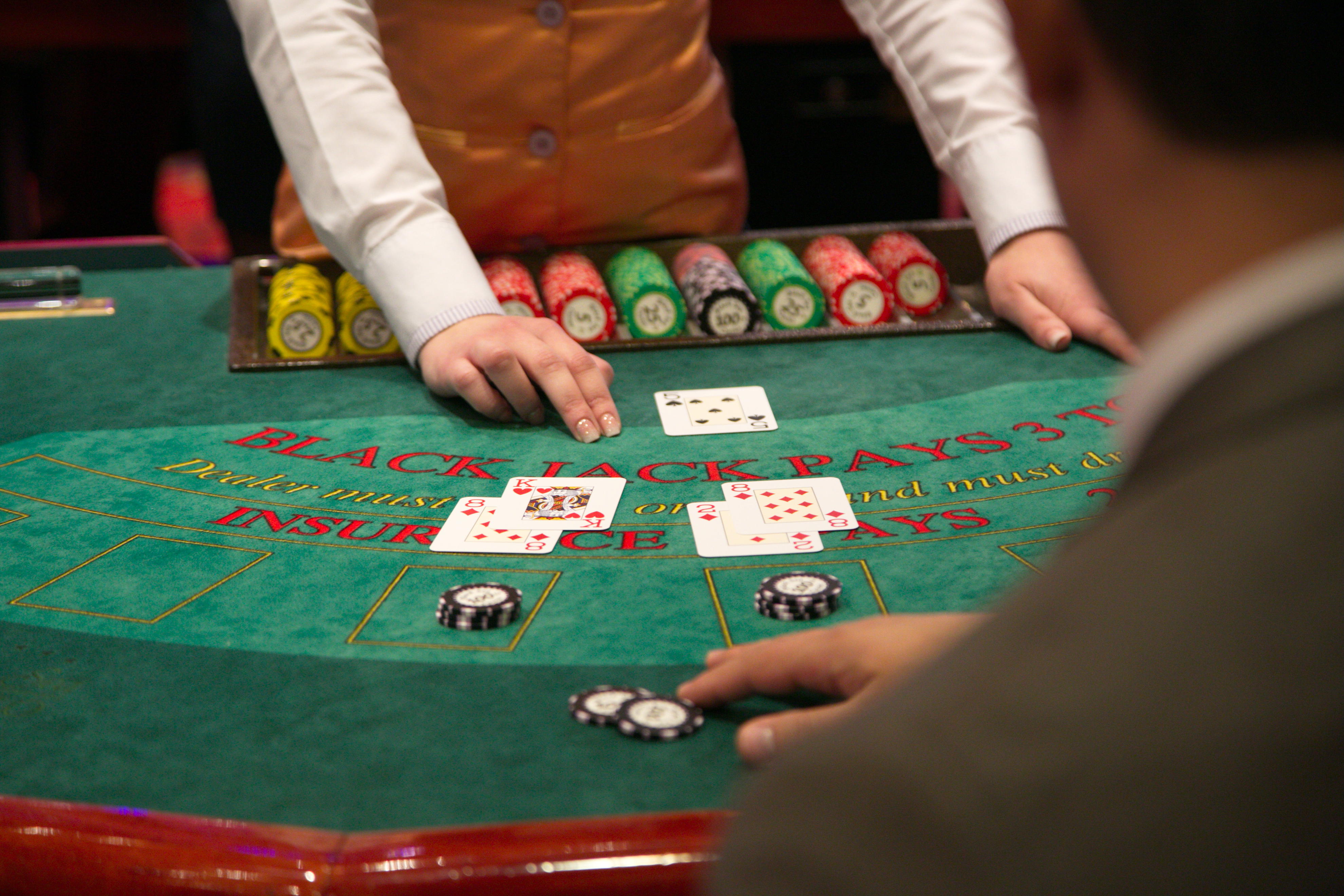This blackjack casino guide looks at what the 21+3 Blackjack side bet is and explains how to try and beat it. If you’re searching for a new way to beat the blackjack dealer then read on.
This blackjack 21+3 guide goes deep into the mathematical universe of pro advantage players (APs) – in this case, blackjack 21+3 card counters – and emerges with the best probabilities on winning aspects of the 21+3 blackjack variant.
Overview of the 21+3 Blackjack Side Bet
When playing basic blackjack, you can train your eye to spot Three Card Poker outcomes. These relate to a player’s first two cards on a blackjack table plus the dealer’s up card. You can stake chips on Three Card Poker outcomes occurring within the game of blackjack, in a side bet known as blackjack 21+3.
What is the Blackjack 21+3 Side Bet?
Stake chips on the 21+3 blackjack side bet box before the cards (in a standard blackjack game) are dealt. The blackjack 21+3 side bet hand contains the two cards of your main blackjack hand plus the dealer’s face-up card. You win or lose based on the outcome of these three cards.
In 21+3 blackjack you’re hoping for a good Three Card Poker ranking hand.
How Much Can I Win Playing Blackjack 21+3?
If you wager on a blackjack 21+3 side bet and get a payable three-card hand you’ll win. Three Card Poker hand rankings and 21+3 blackjack payout odds are as follows (any Ace card functions as high or low):
- Flush: [same suit] example – 3 of hearts, 7/H, J/H – win pays (5 to 1)
- Straight: [consecutive values including picture cards] example – Ace of spades, 2/H, 3/D – (10 to 1)
- Three-of-a-kind: [3 same value/picture cards] example – King/H, K/S, K/C – (25 to 1)
- Straight flush: [same suit and consecutive values/picture cards] example – Queen of clubs, K/C, A/C – (40 to 1)
- Suited three-of-a-kind: [3 same value/picture cards & same suit] example – 9 of diamonds, 9D, 9D – (100 to 1)
The payout odds can vary depending on the casino you play in. And some casinos round up any 21+3 blackjack side bet win to a 9 to 1 payout i.e. regardless of the ranking.
The probability of the different Three Card Poker side bet hand rankings occurring, vary depending on how many decks of cards are in play, in a standard blackjack game.
Top Math Tips for the Blackjack 21+3 Side Bet Game
What follows in this 21+3 blackjack side bet casino guide is a deep exploration into:
- The mathematical odds of winning the 21+3 blackjack side bet game.
- Blackjack 21+3 side wager payout odds.
- And card counting information APs can bear in mind when thinking about whether to wager on 21+3 blackjack.
The “21 + 3” blackjack side bet is based on examining the player’s two cards and the dealer’s up-card. If the three cards form a flush, straight, three-of-a-kind or straight flush, the player wins. In the original version, the payout for each of these was 9-to-1. With this pay table, the game has a house edge of 3.2386%. Recently, new pay tables have been introduced that have higher house edges and greater volatility.
The point of attack I considered is to target flushes. Any strong imbalance in the suits favors the player. For example, consider a situation where there are 40 cards, 10 of each suit. Without going into the math, the number of ways of making a three-card flush is 480. Now, take those same 40 cards, and assume they are distributed 15, 10, 10, 5. Then the number of three-card flushes is 705. The more unbalanced the distribution of suits, the more the edge swings towards the player.

How Card Counting Works in 21+3 Blackjack?
To make use of this, it is necessary to keep track of the number of cards in each suit that remain in the shoe. This can be accomplished by a team of counters, each keeping track of one of the suits (or by a mentally gifted solo counter). The counters then compute the difference between the most abundant and least abundant suits. This difference is then turned into a true count, and if that true count is sufficiently large, the player has an edge.
Results of Blackjack 21+3 Card Counting Simulation
I created a simulation to model using this system on a six-deck shoe game dealt to 52 cards and simulated one hundred million (100,000,000) shoes. This work showed that a counter can gain an edge on approximately 3.5% of the hands dealt (1.75 hands per shoe). The counter should make the 21+3 wager whenever the true count is 8 or higher. The average edge when the wager is made will be just over 5%. If the table limit is $25, then a counter playing heads-up can earn about $2.20 per shoe. The new pay tables were not evaluated.
As an experiment, I shuffled one hundred thousand (100,000) shoes and computed the edge at the point when there were 100 cards remaining in the shoe. The result of this simulation was an average house edge of 3.247%, which is close to the theoretical value of 3.239%. More interesting was that the standard deviation of the house edge was 3.57%. It follows that a player edge is 0.910 standard deviations above the mean. Therefore, the player will have an edge on about 18.14% of the shoes at that point. The trick is knowing which ones. My simulation gave a maximum player edge of 23.71% and a maximum house edge of 13.55%.
There are two reasons that APs will not target 21+3 with this system. The first is its complexity, the second is the low return. However, there is another approach that may be significantly stronger.
Blackjack 21+3 Card Shuffle Tracking
Consider a shuffle tracking approach where a slug of cards is identified that is either deficient in one suit or abundant in one suit. In this case, by tracking that slug through a weak shuffle, the AP will have a good opportunity. My knowledge of shuffle tracking is minimal. I cannot say if this is an approach that has been used in practice. Finally, I have not considered if the new pay tables have a similar vulnerability to the 9-to-1 pay table.
For more information on this topic see:
- Beating the 21+3 Blackjack Side Bet: Some Really Cool Graphs
- Beating the 21+3 Blackjack Side Bet: Update #1
- Perfect Play against the 21+3 Extreme Blackjack Side Bet
The following are my recommendations regarding 21+3:
- Watch for solo players who play this wager only at certain times during the shoe, and when they play, it is a maximum bet. These players may be using a shuffle tracking approach.
- Watch for a team of players who all play maximum wagers on this bet at the same time. These players may be using a card counting approach.
- If your game is hand shuffled and if that shuffle is potentially trackable, consider a new shuffle or leasing an automatic shuffler.

Is There Another Way to Win Playing 21+3 Blackjack Side Bet?
Sometime after conducting my 21+3 Blackjack card counting mathematical research, several casino sources expressed concern about advantage play against the 23+3 side bet. I then came across the following post on a web site frequented by APs: Norm Wattenberger's Blackjack Forum.
This was enough to inspire me to go back and have a second look. I decided to run a “perfect play” analysis of the 21+3 side bet to see if these concerns had merit. Perfect play analysis involves the following steps for a six-deck shoe:
- Go through a shoe one hand at a time.
- Before each hand, compute the exact edge for the 21+3 blackjack side bet based on the cards remaining in the shoe.
- Only make the 21+3 blackjack wager when the player has the edge, and at no other time.
- Record what happened.
By simulating a bunch of shoes, I was able to get results that give an absolute upper bound for beating the blackjack 21+3 side bet; using a method where the player doesn’t have any prior information about the shoe (e.g. shuffle tracking). I ran 10,000 shoes and got the following results for perfect play, with the cut card placed at 260 cards (one deck from the end of the shoe):
It is interesting to break this down by the particular location in the shoe a wager is made. For example, half-way through the shoe (156 cards), the AP:
- Will have the edge on 5.241% of the hands at that point; and;
- His average edge when he makes a 21+3 wager is 1.292%.
If the shoe is dealt deeply, then with 39 cards remaining, the AP will have the edge 31.899% of the time, and his average edge is 9.997%. What is important to remember is that these are “perfect play” results. The only way to achieve these numbers in a casino playing on the blackjack 21+3 side bet would be to use a computer application, live and in real-time, at the table.
Can Players Win Side Betting 21+3 Blackjack Using a Computer?
It is unreasonable to expect that a player would consider cheating (using a device) for a profit of 0.2748 units per shoe, especially:
- Given the low denomination of wagers usually played betting on the 21+3 blackjack side bet; and;
- The practical difficulties involved in developing and using such a device.
It is, nevertheless, important to consider this possibility in light of the recent attack on the baccarat Lucky Pairs using a device, as discussed in this post. It is worthwhile to consider how well a human-feasible card counting method fares compared to perfect play.
Above I described an approach to counting cards – used in blackjack games with 21+3 side bet options – using the “suit count.” To make clear how APs might seek to win the 21+3 blackjack side bet:
- A team of counters keeps track of the suits.
- The counters then consider the difference between the most abundant and least abundant suits.
- This difference is then converted to a true count, and if that count is sufficiently large, the AP has the advantage.
21+3 Blackjack Side Bet Huge Suit Count Simulation
Here are the results of a simulation of one hundred million (100,000,000) six-deck shoes, dealt to 260 cards (52 cards remaining), using the suit count against 21+3 blackjack side bet: The suit count returns 0.1777 units per 100 hands, compared to a computer perfect return of 0.2748 units per 100 hands.
From these numbers, it is clear that the suit count is highly inefficient, gaining only 64.7% of the potential income from perfect play. However, even if a perfect card counting system could be developed to take advantage of the 21+3 blackjack side bet (it can’t), the best it could do is 0.2748 units per 100 hands.
In a worst case scenario, attempts to gain any significant advantage over the house by counting cards to win at the 21+3 blackjack side bet equates to only a minimal vulnerability attack rating. Yet it’s still important to keep an open mind about advantage play.
I am very thankful to those who asked the question for inspiring this additional work on 21+3 blackjack. The easy road is to make conclusions based on insufficient information. It’s also the dangerous road. As Confucius said: "Learning without thought is labor lost; thought without learning is perilous."

Q&A: Blackjack 21+3 Side Bet – Things You Should Know
If I place a bet on 21+3 Blackjack will this change the way the cards are dealt?
If you place a side bet on blackjack 21+3 the normal way a dealer deals cards remains the same. Blackjack 21+3 is a side bet played during a normal round of 21Blackjack.
Is it possible to gain an edge counting cards to win at 21+3 Blackjack?
It is possible to gain a super slight advantage to win at 21+3 blackjack by counting cards. But maths research through count simulations indicates the edge is too low to be worth trying. Also, it would be very difficult to keep track of card suits. A team of card counters would be needed and possibly a computer. In land-based casinos you’re not allowed to use computers to count cards.
What cards form a 21+3 Blackjack side bet in a casino?
In a round of classic blackjack you can also make a 21+3 blackjack side bet. The cards that will be considered to determine if you’ve won are your two normal blackjack cards and the one face-up card on the dealer’s side. All 3 cards will form a possible winning rank within the Three-Card-Poker structure.
How much will I get paid if I win betting on 21+3 Blackjack?
How much you win depends on how much you bet. And this is determined by the amount the casino offers: Which is normally 9/1 odds if you win on any Three-Card-Poker hand, with a side bet on 21+3 black, when playing normal blackjack. If there are individual payouts for different ranking hands, then you could stand to win the following payout odds:
Flush: payout odds (5 to 1); Straight: payout odds (10 to 1); Three-of-a-kind: payout odds 25 to 1); Straight flush: payout odds (40 to 1); Suited three-of-a-kind: payout odds (100 to 1). The payout odds for 21+3 blackjack can vary depending on the casino you gamble in.
Can you win big playing Blackjack 21+3?
If the casino you bet 21+3 blackjack in pays out on individual Three-Card-Poker rankings you could be paid as much as about 100/1. It really depends on the type of hand you win on.
But even if the casino only pays out 9/1 odds on winning bets, if you stake money on blackjack 21+3 on winning games and miss out some (what turn out to be losing) games, it’s possible you can get ahead if you’re lucky.
But what’s important is patience and timing. Trying to win playing casino games is like a battle. And this is true too when trying to beat 21+3 blackjack. As Leo Tolstoy put it, ‘The two most powerful warriors are patience and time.’
Bear in mind that: within reason, wins follow wins, and losses follow losses; and of course, a mix of both. But look out for streaks of winning hands and try to bet on the 21+3 blackjack side bet when wins are running rich. Don’t forget too, you could increase wagers somewhat during winning streaks and bet less when these dry up. This is a powerful gambling tool if you happen to get the timing right.


